Coming Across an Old Man’s Smile in an Old Forest
Jian Seunim at Tongdosa Temple’s Banyaam Hermitage in Yangsan
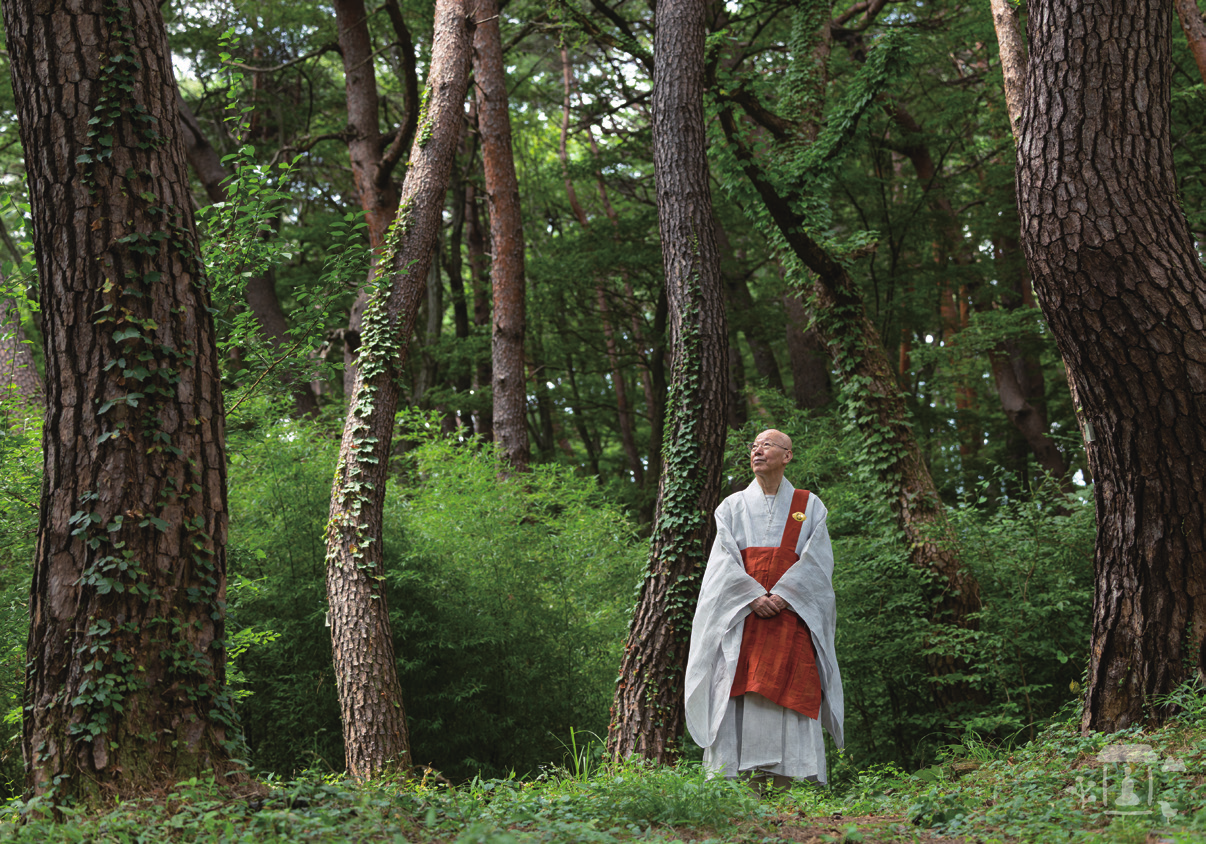
"I couldn’t help but think of the forest.
And it wasn’t just because the monk’s hermitage was surrounded by the deep forest
on Mt. Yeongchuksan, where the rugged terrain unfolded behind Tongdosa Temple. Nor was it
because of the winding path to Banyaam Hermitage that
squeezed through gaps in the dense forest.
And it wasn’t just because the forest around Banyaam Hermitage was so lush and green,
carefully tended to by Jian Seunim, who loves planting trees.
And it wasn’t just because of what I saw as soon as I got out of the car:
the towering pine trees, the bamboo forest concealing the lower trunks of the pine trees,
the plum blossoms, the camellias,
and the crape myrtle trees blooming with a profusion of flowers.
The forest.
If all the monks Jian Seunim has taught and nurtured throughout his life were to gather
together here, what would one call that spectacle?
The forest.
It seems there isn’t any other word for it"
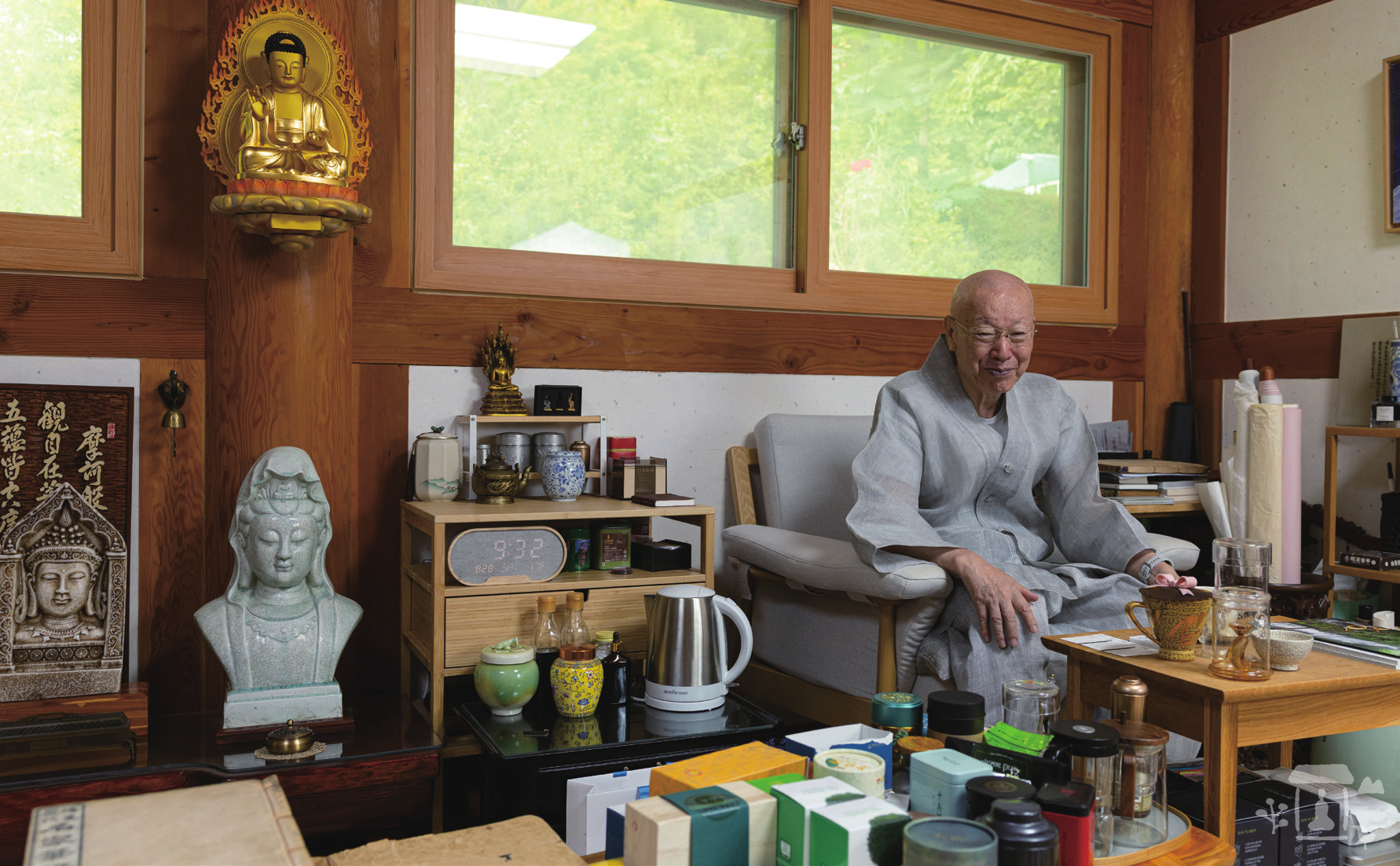
The monk I met Banyaam Hermitage after a walk through the forest was not the tallest tree in the forest, trees I perceived to be primeval monks, but more like a thick mound of moss in the deepest part of the forest. As I made my way through the dense forest—where the heights of the trees seemed unfathomable—I stumbled upon a clearing and this arboreal master of the clearing, where a single ray of sunlight shone down like a spotlight. It was a place where I could bow, a place where I could lie down. Spending half a day there, drinking delicious coffee, laughing, and exchanging idle chatter with the master of the clearing, I couldn’t help but think; about the forest. I also couldn’t help but think of the forest where this primeval monk’s life truly began. I couldn’t forget the first day I had attended the dawn Buddhist ceremony at Tongdosa Temple. The long procession heading to the dharma hall on that rainy morning. The hall was filled with the congregation and the monks’ solemn chanting. It’s said that Jian Seunim’s beginnings happened right there. In that very place, Jian Seunim, then a young college student studying law, had first shed copious tears.
Seeing the Opportune Causes and Conditions of the Times
Q: I heard you decided to become a monk after attending the dawn ceremony at Tongdosa Temple?
A: That’s right. They say this kind of thing happens to help you dissipate your karma. I was so moved by the ceremony that I kept crying. It was a bit embarrassing, crying like a child. And afterward I decided to become a monk. When you first hear the dawn ceremony at Tongdosa Temple, it’s incredibly moving, almost mystical. While other temples perform the Ritual of Seven Prostrations, Tongdosa—in keeping with the founding principles of Vinaya Master Jajang—performs the Ritual of Eleven Prostrations. The ceremony is truly majestic
Q: Were you interested in Buddhism before your decision to enter monkhood?
A: No. I didn’t know anything about Buddhism. When I was in school, I only knew of two temples: Haeinsa and Bulguksa. Then, by chance, a senior student at my school, who had recently spent some time at Tongdosa Temple, introduced me to this place, and that’s how I first came here.
Q: I heard you prepared for the bar exam before becoming a monk.
A: In the past, if you did well in school, people would say, “Study for the bar exam!” It’s true. Like most people, I loved reading books from a young age. Because I loved reading, I studied a lot. Studying requires lots of reading. Even after I became a monk and later studied in the monastic college, I studied just as diligently as anyone else.
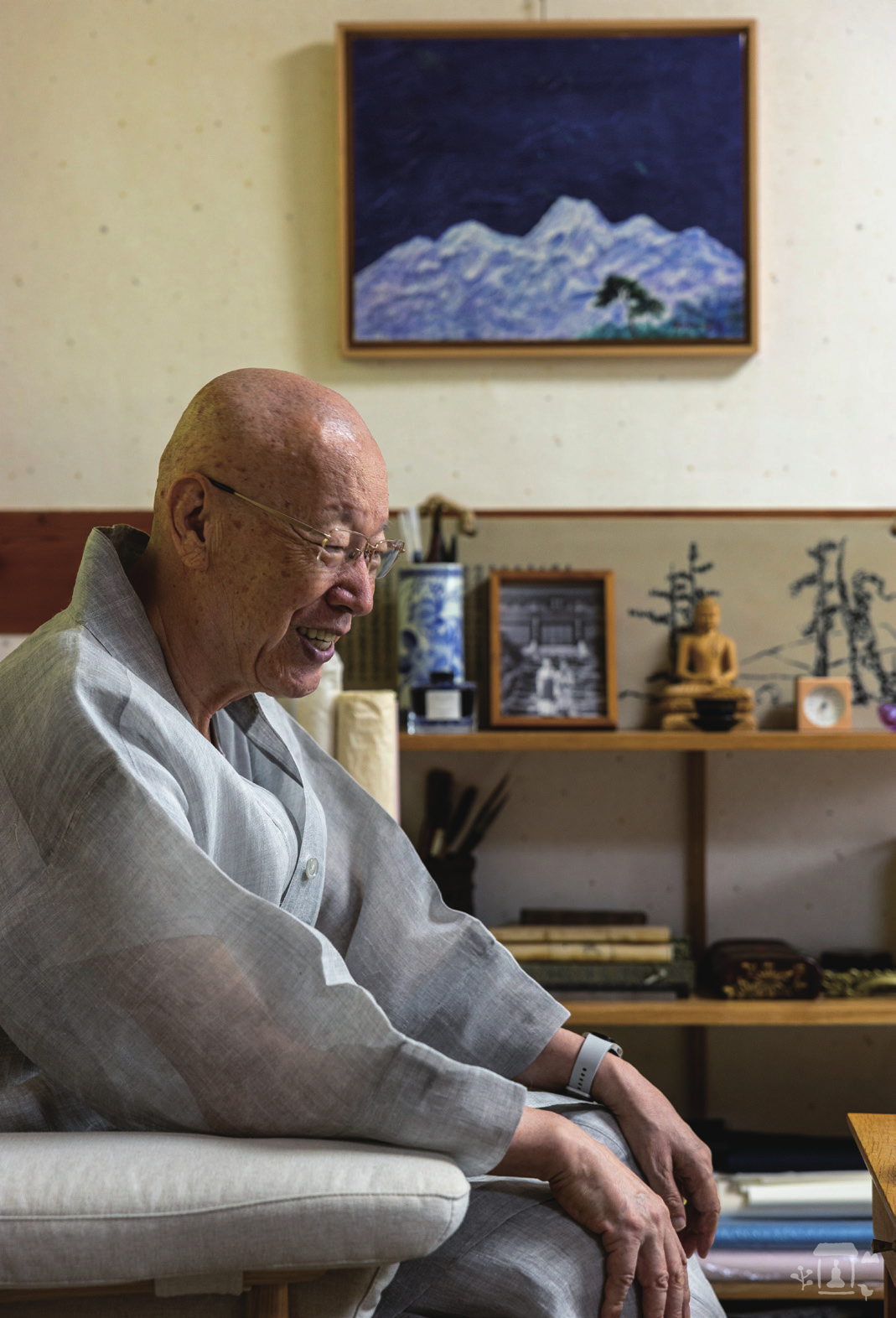
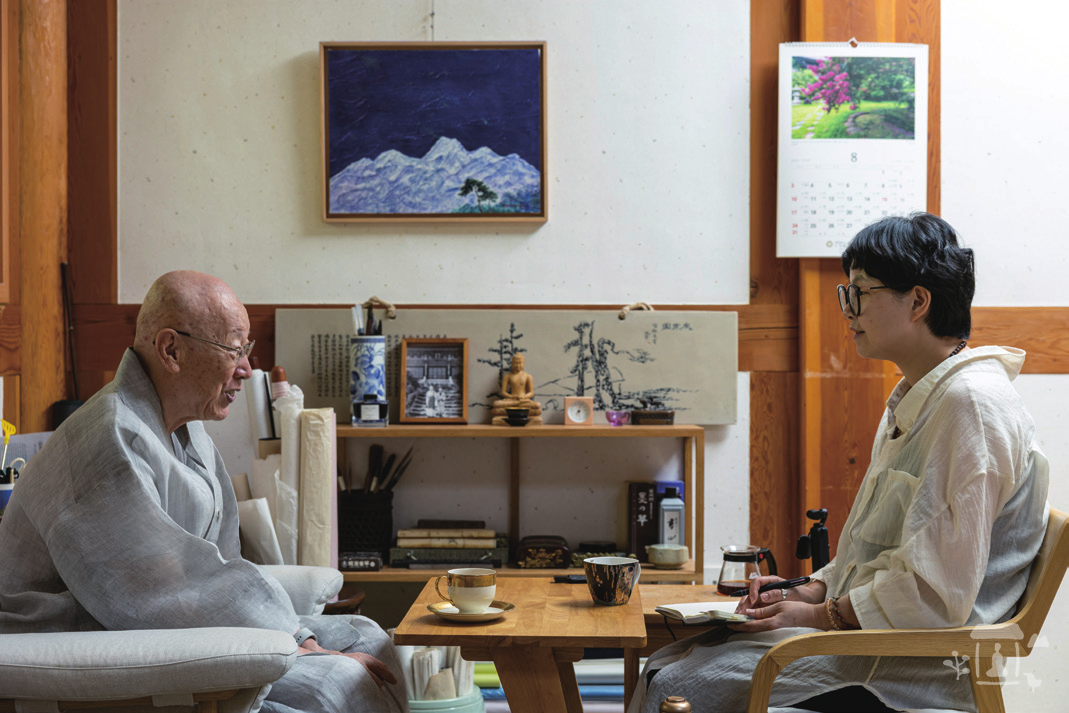
Q: Some interviews depict you as a very scary person back in the day. Your nickname was “American-made axe handle lecturer monk.”
A: That is, as they say, “fake news.” (laughing) I was young when I began teaching. Back when my teacher was still alive, he would point out each and every student’s mistakes. For example, in the late 1970s, you were not supposed to miss morning and evening Buddhist ceremonies. One day, a student didn’t show up and was found sleeping in a small room. There was no American-made axe handle there (laughing), so I went in with a piece of firewood and struck the thick blanket he was under, causing his forehead to bleed. Still, he put on his monastic robe and came to my room to repent. It’s not like that these days. I would rather be beaten up myself. But back then, discipline was strict in mountain temples, and there were elders to enforce it.
Q: Then how have you become such a compassionate person now?
A: As you age, you become more mellow. If you remain rigid even as you age, you’re living wrong. You don’t have to strive to become more compassionate, but it just happens naturally. As you age, just treat others more gently and with compassion, and smile. That’s my Dharma talk to everyone. An elderly person’s smile is a Dharma talk of a hundred ages. Just know that. Don’t live with a frown. A good face can be distorted by that.
Q: I wonder which is more effective, being strict or being compassionate?
A: Times have their own appropriate disciplines. There are times when things should be done a certain way. The times decide what is possible or impossible. It’s truly fascinating. Even individual capacities change. In the old days, there were strict rules and regulations in all the mountain temples, but these days, it’s no longer so. Those times are gone. That’s why they say one must try to see the causes and conditions of the times. … (laughing) … I led a really hard life at Tongdosa Temple in my youth. I don’t think anyone had a harder life than me.
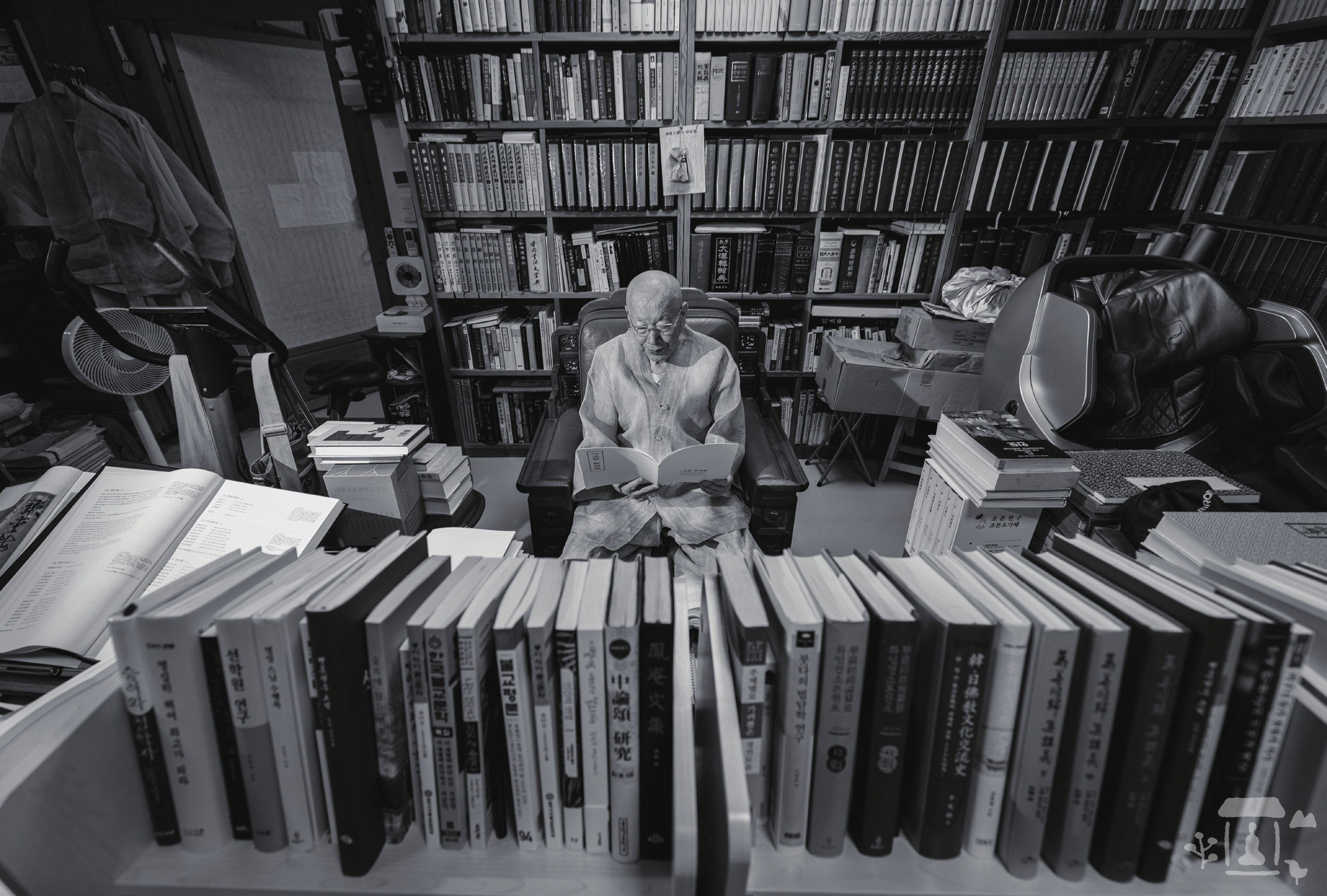
"Buddhism, enlightenment… In Seon, it’s about “seeing one’s true nature, seeing one’s mind ground.” To put it in Western terms, it’s about confirming one’s identity. Who am I? Confirming this is to see one’s true nature, or enlightenment. So, it’s a study of learning about myself, of knowing myself"
Q: When talking about Buddhism, you said, “Buddhism is a religion where I learn about myself.” What does that mean?
Q: There are so many Buddhist scriptures, as in the Tripitaka Koreana. You’ve read so many of them. Could you summarize them in just one phrase?
Q: Which sutra would you recommend to someone just beginning their study of Buddhism?
Q: You’ve published many books. If you could recommend just one of them and say, “This is the one I want people to read,” which would it be?
Q: You’ve published many books, but you’ve also given numerous Dharma talks.
Q: If you were to gather all the monks who studied under you, they would probably cover this mountain. You’ve given countless lectures. What’s the most common question you get asked when you teach?
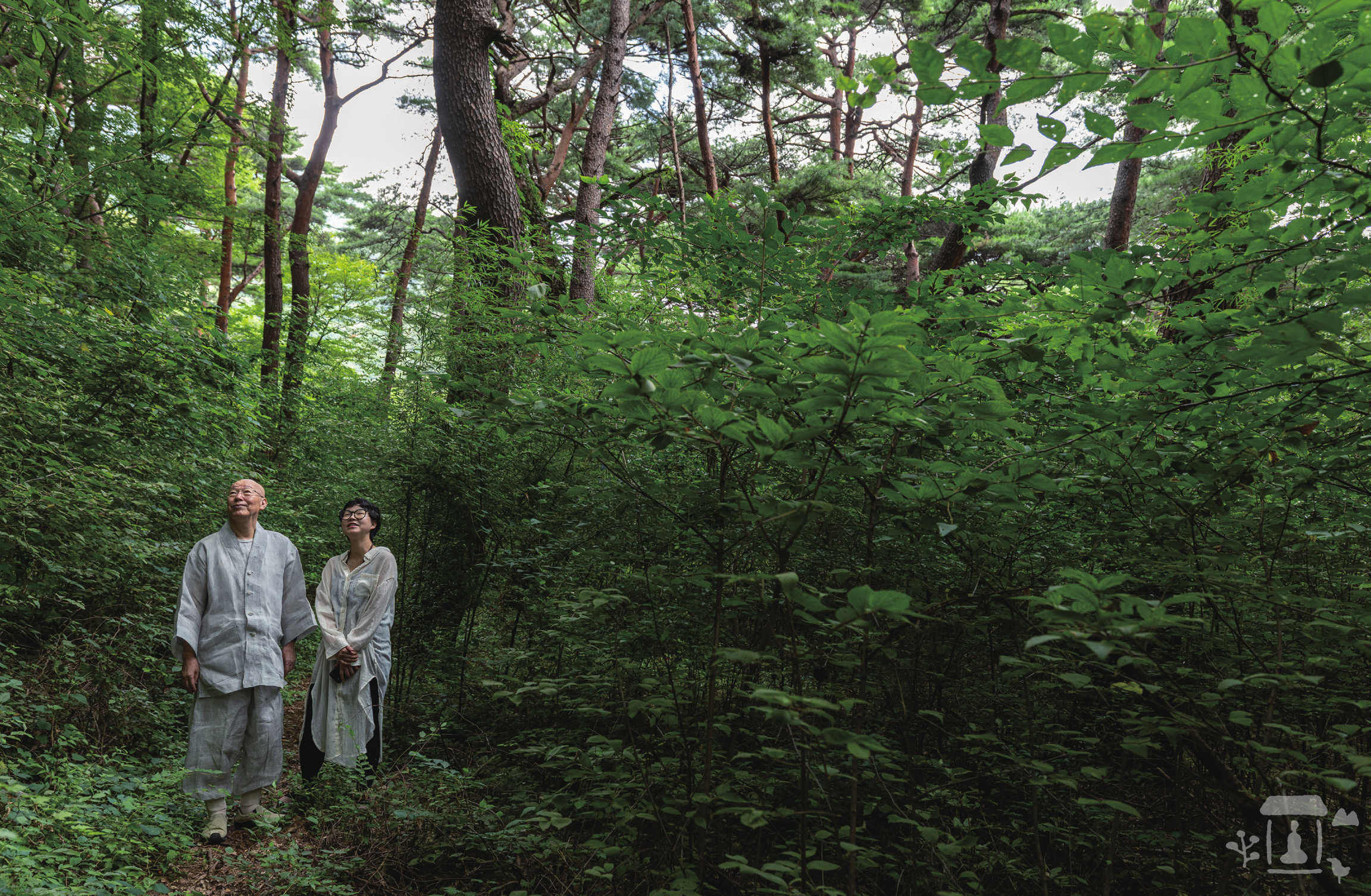
Q: Were there any memorable questions?
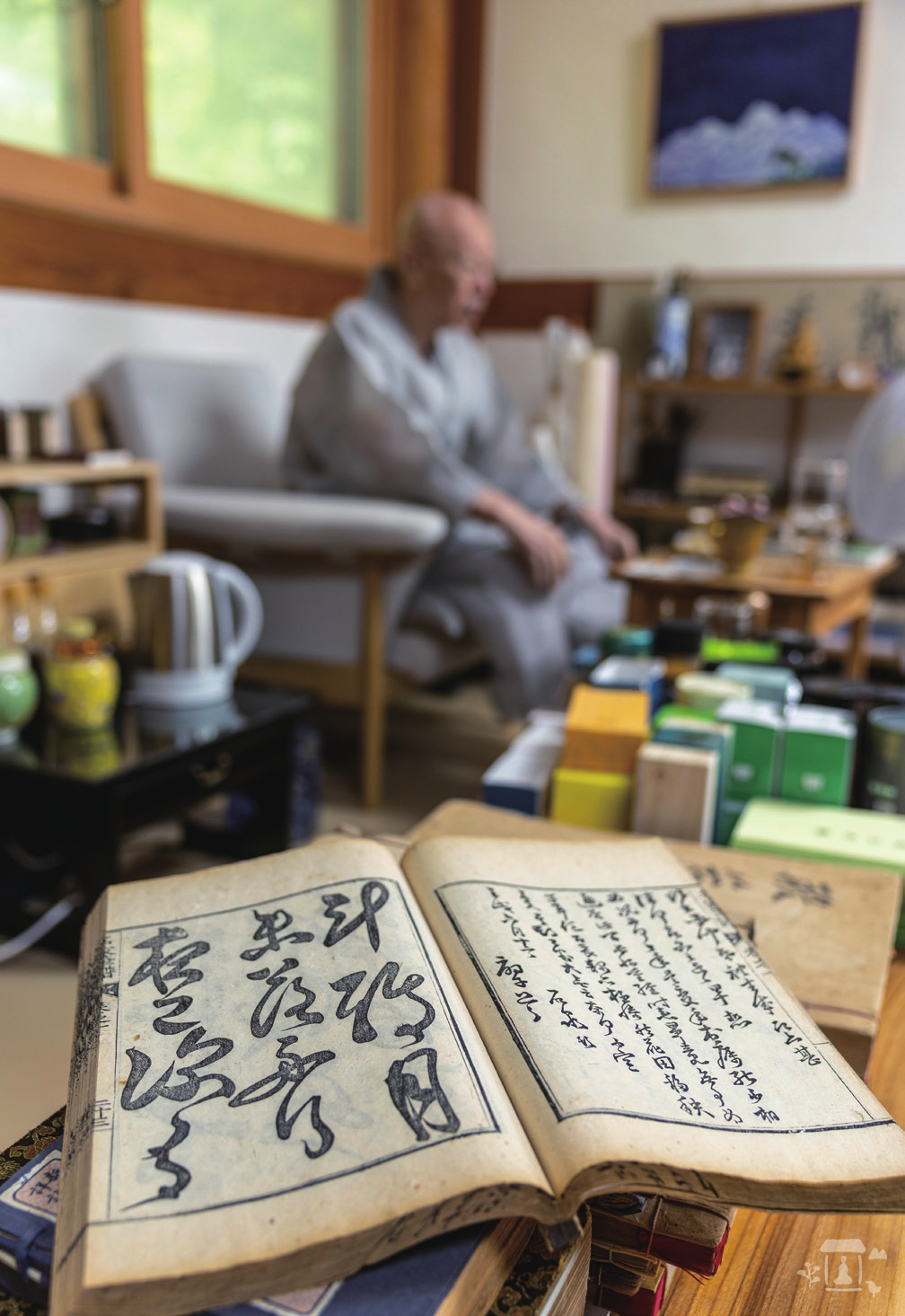
Q: While studying Buddhism, I realized that it requires a completely different mindset than studying other subjects, and that’s how one must truly study it. What kind of mindset should I have?
Q: You’ve lived in a temple for most of your life. It might seem quite monotonous, but I’m curious about when you’re happiest and what you enjoy most.
Q: I think those words resonate even more deeply when spoken by a monk who has spent his life reading. Lastly, I’d like to conclude the interview by asking you to share your thoughts on the value of the Sangha in this day and age.





